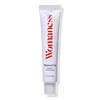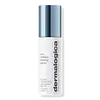What's inside
What's inside
 Key Ingredients
Key Ingredients

 Benefits
Benefits

 Concerns
Concerns

 Ingredients Side-by-side
Ingredients Side-by-side

Water
Skin ConditioningHeptyl Undecylenate
EmollientSilica
AbrasiveVinyl Dimethicone/Methicone Silsesquioxane Crosspolymer
Glycerin
HumectantButylene Glycol
HumectantPentylene Glycol
Skin ConditioningCaprylic/Capric Triglyceride
MaskingRetinol
Skin ConditioningCeramide Ng
Skin ConditioningSodium Hyaluronate
HumectantRosa Canina Fruit Oil
EmollientRosmarinus Officinalis Leaf Extract
AntimicrobialHelianthus Annuus Extract
EmollientPrunus Armeniaca Kernel Oil
MaskingVitis Vinifera Seed Oil
EmollientOryza Sativa Bran Extract
Skin ConditioningAmmonium Acryloyldimethyltaurate/Beheneth-25 Methacrylate Crosspolymer
Emulsion StabilisingAmmonium Acryloyldimethyltaurate/Vp Copolymer
Caprylyl Glycol
EmollientCitric Acid
BufferingJojoba Esters
EmollientLactic Acid
BufferingPhenoxyethanol
PreservativePolysorbate 20
EmulsifyingPotassium Hydroxide
BufferingPotassium Sorbate
PreservativeSodium PCA
HumectantTetrasodium Glutamate Diacetate
Tocopherol
AntioxidantWater, Heptyl Undecylenate, Silica, Vinyl Dimethicone/Methicone Silsesquioxane Crosspolymer, Glycerin, Butylene Glycol, Pentylene Glycol, Caprylic/Capric Triglyceride, Retinol, Ceramide Ng, Sodium Hyaluronate, Rosa Canina Fruit Oil, Rosmarinus Officinalis Leaf Extract, Helianthus Annuus Extract, Prunus Armeniaca Kernel Oil, Vitis Vinifera Seed Oil, Oryza Sativa Bran Extract, Ammonium Acryloyldimethyltaurate/Beheneth-25 Methacrylate Crosspolymer, Ammonium Acryloyldimethyltaurate/Vp Copolymer, Caprylyl Glycol, Citric Acid, Jojoba Esters, Lactic Acid, Phenoxyethanol, Polysorbate 20, Potassium Hydroxide, Potassium Sorbate, Sodium PCA, Tetrasodium Glutamate Diacetate, Tocopherol
Water
Skin ConditioningPentylene Glycol
Skin ConditioningCoco-Caprylate/Caprate
EmollientGlycerin
HumectantPropanediol
SolventSimmondsia Chinensis Seed Oil
EmollientTrehalose
HumectantOryza Sativa Bran Water
MaskingButylene Glycol
HumectantEthoxydiglycol
HumectantTriheptanoin
Skin ConditioningArginine PCA
HumectantDiglycerin
HumectantDipotassium Glycyrrhizate
HumectantSodium Hyaluronate
HumectantCollagen Amino Acids
MoisturisingGlycine Soja Oil
EmollientHelianthus Annuus Seed Oil
EmollientCitrus Aurantium Dulcis Peel Oil
MaskingCitrus Aurantium Bergamia Fruit Oil
MaskingCitrus Paradisi Peel Oil
MaskingRosmarinus Officinalis Leaf Extract
AntimicrobialCupressus Sempervirens Leaf/Nut/Stem Oil
EmollientSantalum Album Oil
MaskingCitrus Limon Peel Oil
MaskingRosa Damascena Flower Oil
MaskingJasminum Sambac Flower Extract
MaskingHydrolyzed Jojoba Esters
Skin ConditioningOryza Sativa Bran Extract
Skin ConditioningAloe Barbadensis Leaf Extract
EmollientTephrosia Purpurea Seed Extract
Skin ConditioningHelianthus Annuus Extract
EmollientJuniperus Virginiana Oil
MaskingTagetes Minuta Flower Oil
MaskingRosmarinus Officinalis Leaf Oil
MaskingCistus Ladaniferus Leaf/Stem Extract
MaskingHydrolyzed Rice Protein
Skin ConditioningTocopheryl Acetate
AntioxidantTocopherol
AntioxidantPhospholipids
Skin ConditioningCarnosine
Skin ConditioningGlyceryl Stearate Citrate
EmollientCaprylyl Glycol
EmollientPolyglutamic Acid
Skin ConditioningGlycolipids
Skin ConditioningGlycine Soja Sterols
EmollientAcrylates/C10-30 Alkyl Acrylate Crosspolymer
Emulsion StabilisingGlyceryl Caprylate
EmollientSclerotium Gum
Emulsion StabilisingPolyquaternium-80
CleansingDidecyldimonium Chloride
EmulsifyingDianthus Caryophyllus Flower Extract
MaskingXanthan Gum
EmulsifyingMethylpropanediol
SolventCetearyl Alcohol
EmollientPEG-40 Hydrogenated Castor Oil
EmulsifyingAmmonium Acryloyldimethyltaurate/Beheneth-25 Methacrylate Crosspolymer
Emulsion StabilisingPhytic Acid
Polysorbate 20
EmulsifyingTetrasodium Glutamate Diacetate
Citric Acid
BufferingSodium Hydroxide
BufferingSodium Polyacryloyldimethyl Taurate
Emulsion StabilisingSodium Benzoate
MaskingPotassium Sorbate
PreservativeLimonene
PerfumingLinalool
PerfumingWater, Pentylene Glycol, Coco-Caprylate/Caprate, Glycerin, Propanediol, Simmondsia Chinensis Seed Oil, Trehalose, Oryza Sativa Bran Water, Butylene Glycol, Ethoxydiglycol, Triheptanoin, Arginine PCA, Diglycerin, Dipotassium Glycyrrhizate, Sodium Hyaluronate, Collagen Amino Acids, Glycine Soja Oil, Helianthus Annuus Seed Oil, Citrus Aurantium Dulcis Peel Oil, Citrus Aurantium Bergamia Fruit Oil, Citrus Paradisi Peel Oil, Rosmarinus Officinalis Leaf Extract, Cupressus Sempervirens Leaf/Nut/Stem Oil, Santalum Album Oil, Citrus Limon Peel Oil, Rosa Damascena Flower Oil, Jasminum Sambac Flower Extract, Hydrolyzed Jojoba Esters, Oryza Sativa Bran Extract, Aloe Barbadensis Leaf Extract, Tephrosia Purpurea Seed Extract, Helianthus Annuus Extract, Juniperus Virginiana Oil, Tagetes Minuta Flower Oil, Rosmarinus Officinalis Leaf Oil, Cistus Ladaniferus Leaf/Stem Extract, Hydrolyzed Rice Protein, Tocopheryl Acetate, Tocopherol, Phospholipids, Carnosine, Glyceryl Stearate Citrate, Caprylyl Glycol, Polyglutamic Acid, Glycolipids, Glycine Soja Sterols, Acrylates/C10-30 Alkyl Acrylate Crosspolymer, Glyceryl Caprylate, Sclerotium Gum, Polyquaternium-80, Didecyldimonium Chloride, Dianthus Caryophyllus Flower Extract, Xanthan Gum, Methylpropanediol, Cetearyl Alcohol, PEG-40 Hydrogenated Castor Oil, Ammonium Acryloyldimethyltaurate/Beheneth-25 Methacrylate Crosspolymer, Phytic Acid, Polysorbate 20, Tetrasodium Glutamate Diacetate, Citric Acid, Sodium Hydroxide, Sodium Polyacryloyldimethyl Taurate, Sodium Benzoate, Potassium Sorbate, Limonene, Linalool
Ingredients Explained
These ingredients are found in both products.
Ingredients higher up in an ingredient list are typically present in a larger amount.
We don't have a description for Ammonium Acryloyldimethyltaurate/Beheneth-25 Methacrylate Crosspolymer yet.
Butylene Glycol (or BG) is used within cosmetic products for a few different reasons:
Overall, Butylene Glycol is a safe and well-rounded ingredient that works well with other ingredients.
Though this ingredient works well with most skin types, some people with sensitive skin may experience a reaction such as allergic rashes, closed comedones, or itchiness.
Learn more about Butylene GlycolCaprylyl Glycol is a humectant and emollient, meaning it attracts and preserves moisture.
It is a common ingredient in many products, especially those designed to hydrate skin. The primary benefits are retaining moisture, skin softening, and promoting a healthy skin barrier.
Though Caprylyl Glycol is an alcohol derived from fatty acids, it is not the kind that can dry out skin.
This ingredient is also used as a preservative to extend the life of products. It has slight antimicrobial properties.
Learn more about Caprylyl GlycolCitric Acid is an alpha hydroxy acid (AHA) naturally found in citrus fruits like oranges, lemons, and limes.
Like other AHAs, citric acid can exfoliate skin by breaking down the bonds that hold dead skin cells together. This helps reveal smoother and brighter skin underneath.
However, this exfoliating effect only happens at high concentrations (20%) which can be hard to find in cosmetic products.
Due to this, citric acid is usually included in small amounts as a pH adjuster. This helps keep products slightly more acidic and compatible with skin's natural pH.
In skincare formulas, citric acid can:
While it can provide some skin benefits, research shows lactic acid and glycolic acid are generally more effective and less irritating exfoliants.
Most citric acid used in skincare today is made by fermenting sugars (usually from molasses). This synthetic version is identical to the natural citrus form but easier to stabilize and use in formulations.
Read more about some other popular AHA's here:
Learn more about Citric AcidGlycerin is already naturally found in your skin. It helps moisturize and protect your skin.
A study from 2016 found glycerin to be more effective as a humectant than AHAs and hyaluronic acid.
As a humectant, it helps the skin stay hydrated by pulling moisture to your skin. The low molecular weight of glycerin allows it to pull moisture into the deeper layers of your skin.
Hydrated skin improves your skin barrier; Your skin barrier helps protect against irritants and bacteria.
Glycerin has also been found to have antimicrobial and antiviral properties. Due to these properties, glycerin is often used in wound and burn treatments.
In cosmetics, glycerin is usually derived from plants such as soybean or palm. However, it can also be sourced from animals, such as tallow or animal fat.
This ingredient is organic, colorless, odorless, and non-toxic.
Glycerin is the name for this ingredient in American English. British English uses Glycerol/Glycerine.
Learn more about GlycerinHelianthus Annuus Extract comes from the common sunflower.
Sunflowers are rich in vitamin E. Studies show sunflowers contain antimicrobial and antioxidant properties.
The fatty acids found in sunflowers include (from highest amount to least): linoleic acid, myristic acid, palmitic acid, stearic acid, arachidic acid, oleic acid, and linolenic acid.
These fatty acids hydrate your skin. Emollients create a film on the skin to prevent moisture from escaping.
Learn more about Helianthus Annuus ExtractOryza Sativa Bran Extract comes from the outer layer of a rice kernel. It is a byproduct of milling rice, or the operation to produce a whole grain rice product.
This ingredient has moisturizing properties due to its components of polysaccharides and omega-3 fatty acids. It also contains calcium, selenium, phosphorus, iron, and zinc.
Oryza Sativa Bran Extract contains numerous antioxidants such as ferulic acid. Antioxidants help fight free-radical molecules. Free-radical molecules are capable of damaging our cells and other genetic material.
Learn more about Oryza Sativa Bran ExtractPentylene glycol is typically used within a product to thicken it. It also adds a smooth, soft, and moisturizing feel to the product. It is naturally found in plants such as sugar beets.
The hydrophilic trait of Pentylene Glycol makes it a humectant. As a humectant, Pentylene Glycol helps draw moisture from the air to your skin. This can help keep your skin hydrated.
This property also makes Pentylene Glycol a great texture enhancer. It can also help thicken or stabilize a product.
Pentylene Glycol also acts as a mild preservative and helps to keep a product microbe-free.
Some people may experience mild eye and skin irritation from Pentylene Glycol. We always recommend speaking with a professional about using this ingredient in your routine.
Pentylene Glycol has a low molecular weight and is part of the 1,2-glycol family.
Learn more about Pentylene GlycolPolysorbate 20 is made by combining ethoxylation of sorbitan, ethylene oxide, and lauric acid. It is a mild cleansing agent, surfactant, and emulsifier.
As a surfactant, it helps collect dirt and oils for washing. Emulsifiers prevent oils and water from separating.
Polysorbate 20 also adds scent to a product. Since it is made using sorbitol, it has a sweet scent. Sorbitol can also be found in fruits such as apples and peaches.
The lauric acid used to create Polysorbate 20 is often derived from coconuts.
Polysorbate 20 may not be fungal acne safe.
Learn more about Polysorbate 20Potassium Sorbate is a preservative used to prevent yeast and mold in products. It is commonly found in both cosmetic and food products.
This ingredient comes from potassium salt derived from sorbic acid. Sorbic acid is a natural antibiotic and effective against fungus.
Both potassium sorbate and sorbic acid can be found in baked goods, cheeses, dried meats, dried fruit, ice cream, pickles, wine, yogurt, and more.
You'll often find this ingredient used with other preservatives.
Learn more about Potassium SorbateRosmarinus Officinalis Leaf Extract comes from rosemary. Rosemary is native to the Mediterranean.
While Rosmarinus Officinalis Leaf Oil can be volatile due to its fragrant properties, the fragrance components are usually removed in the leaf extract.
Rosemary Leaf Extract contains many antioxidants such as rosmarinic acid and caffeic acid. Rosemarinic acid, a compound found in rosemary leaf, has been found to help soothe skin conditions such as eczema and acne.
Learn more about Rosmarinus Officinalis Leaf ExtractSodium Hyaluronate is hyaluronic acid's salt form. It is commonly derived from the sodium salt of hyaluronic acid.
Like hyaluronic acid, it is great at holding water and acts as a humectant. This makes it a great skin hydrating ingredient.
Sodium Hyaluronate is naturally occurring in our bodies and is mostly found in eye fluid and joints.
These are some other common types of Hyaluronic Acid:
Learn more about Sodium HyaluronateTetrasodium Glutamate Diacetate is a chelating agent. Chelating agents help prevent metal ions from binding to other ingredients. This helps prevent unwanted effects and reactions from a product. These metal ions may come from water and are found in miniscule amounts.
Tetrasodium Glutamate Diacetate can also help other preservatives be more effective.
Tocopherol (also known as Vitamin E) is a common antioxidant used to help protect the skin from free-radicals and strengthen the skin barrier. It's also fat soluble - this means our skin is great at absorbing it.
Vitamin E also helps keep your natural skin lipids healthy. Your lipid skin barrier naturally consists of lipids, ceramides, and fatty acids. Vitamin E offers extra protection for your skin’s lipid barrier, keeping your skin healthy and nourished.
Another benefit is a bit of UV protection. Vitamin E helps reduce the damage caused by UVB rays. (It should not replace your sunscreen). Combining it with Vitamin C can decrease sunburned cells and hyperpigmentation after UV exposure.
You might have noticed Vitamin E + C often paired together. This is because it is great at stabilizing Vitamin C. Using the two together helps increase the effectiveness of both ingredients.
There are often claims that Vitamin E can reduce/prevent scarring, but these claims haven't been confirmed by scientific research.
Learn more about TocopherolWater. It's the most common cosmetic ingredient of all. You'll usually see it at the top of ingredient lists, meaning that it makes up the largest part of the product.
So why is it so popular? Water most often acts as a solvent - this means that it helps dissolve other ingredients into the formulation.
You'll also recognize water as that liquid we all need to stay alive. If you see this, drink a glass of water. Stay hydrated!
Learn more about Water